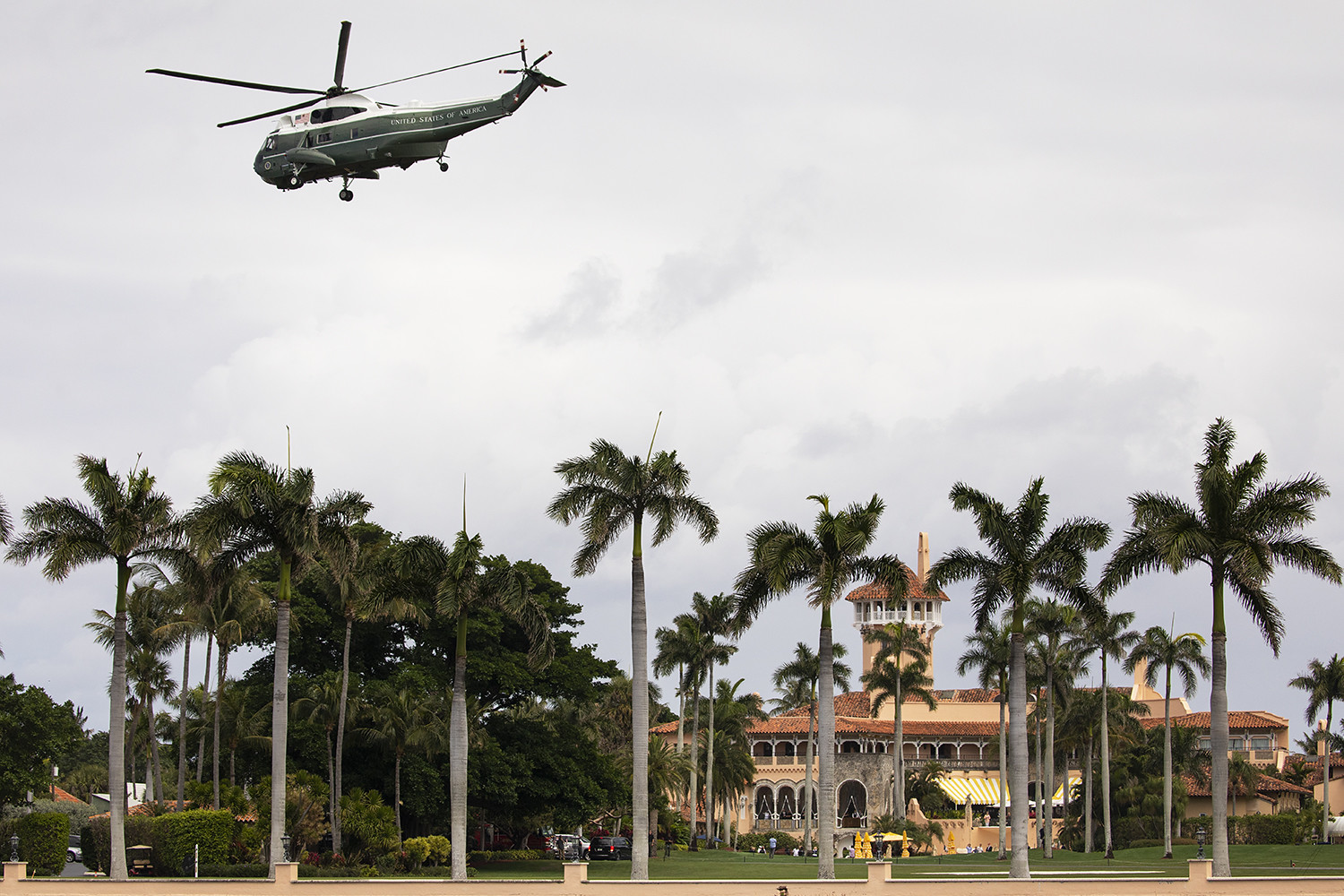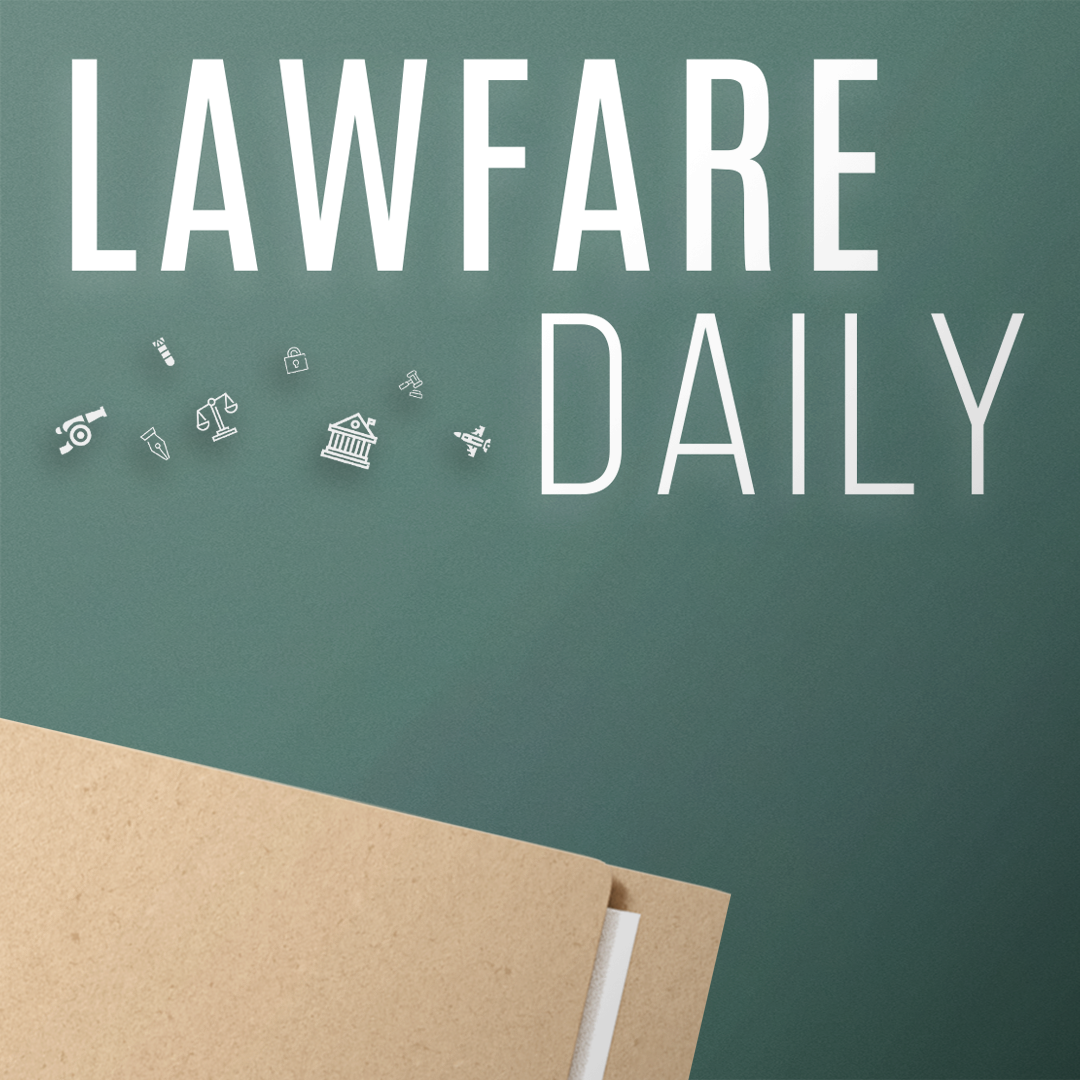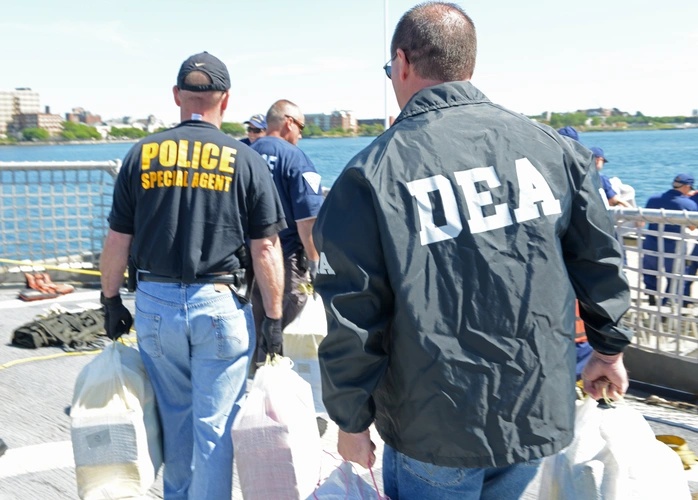What’s in the Unsealed Mar-a-Lago Search Warrant?
Here’s what the now public warrant can tell us so far about the property seized and potential crimes being investigated.

Published by The Lawfare Institute
in Cooperation With

On Friday afternoon, Magistrate Judge Bruce Reinhardt of the U.S. District Court for the Southern District of Florida unsealed the search warrant the FBI executed at Mar-a-Lago on Monday, along with the inventory of seized materials. The action follows yesterday’s speech by Attorney General Merrick Garland, in which he declared that the Justice Department would move the court to release the material—and the decision by former President Donald Trump not to object to the release.
What follows is a quick analysis of the material released.
The warrant authorizes the seizure of four categories of material at Trump’s Mar-a-Lago residence at 1100 S Ocean Blvd in Palm Beach, FL, a property described as “a resort, club, and residence” and a “mansion with approximately 58 bedrooms, 33 bathrooms, on a 17-acre estate.” The locations authorized for search included the “45 Office,” all storage rooms, and all rooms that the former president and his staff could have used to store materials. The warrant did not allow for a blanket search of the resort and excluded areas occupied by other club members at the time of the search.
The property to be seized included documents and records constituting “contraband, fruits of crime, or other items illegally possessed in violation of 18 U.S.C. §§ 793, 2071, and 1519.”
One of the more interesting revelations about the search warrant is the inclusion of 18 U.S.C. § 1519, entitled “Destruction, alteration, or falsification of records in Federal investigations and bankruptcy.” Section 1519 provides that:
Whoever knowingly alters, destroys, mutilates, conceals, covers up, falsifies, or makes a false entry in any record, document, or tangible object with the intent to impede, obstruct, or influence the investigation or proper administration of any matter within the jurisdiction of any department or agency of the United States or any case filed under title 11, or in relation to or contemplation of any such matter or case, shall be fined under this title, imprisoned not more than 20 years, or both.
Sec. 1519 was originally enacted in the wake of the Enron and Worldcom corporate scandals as part of the Sarbanes-Oxley Act of 2002. It was intended to broadly penalize efforts to interfere with federal investigations and other proceedings by destroying or falsifying records, thereby eliminating certain “technical” requirements that some courts had read into other obstruction of justice statutes when applying them to such circumstances. For this reason, federal courts have been generally willing to uphold § 1519’s application even in the absence of a pending or imminent investigation, so long as the defendant knew that the record at issue could be relevant to some contemplated investigation or proceeding in the future and acted with the requisite intent to interfere with it. While originally conceived in the context of white-collar crime, § 1519’s use has been upheld in a wide variety of circumstances. In particular, the Justice Department has frequently used it in cases where defendants are believed to have made false statements or omitted material information from a document provided to authorities as part of an investigation or related proceeding, including police reports and required records of regulated activities.
How exactly § 1519 might apply to Trump and his associates at Mar-a-Lago is impossible to know without more information about the records at issue and the conduct at Mar-A-Lago related to them. It’s possible someone at Mar-a-Lago destroyed or falsified records relating either to an ongoing investigation or to misconduct that the person believed might be the subject of an investigation in the future. Notably, the warrant authorizes the seizure of “[a]ny evidence of the knowing alteration, destruction, or concealment of any government and/or Presidential Records, or of any documents with classification markings”—which could be relevant to § 1519 charges if done with the intent to interfere with a potential federal investigation. That said, this same evidence could also be relevant to charges under 18 U.S.C. § 793 or 18 U.S.C. § 2701.
Another possibility is that the magistrate judge’s finding of probable cause under § 1519 did not relate to the disputed documents themselves, but to other records generated as part of the investigation into the records. For example, if Trump or an associate knowingly provided federal authorities with a falsified inventory or other record of documents the person claimed to be retaining on-site, then this could constitute a violation of § 1519 as well. Evidence that Trump and his associates still had documents they claimed not to have in their possession, meanwhile, would be relevant to proving this claim and could be the subject of the search warrant.
The warrant also names 18 U.S.C. § 2071, which covers the “Concealment, Removal, or Mutilation Generally” of government records. Section 2071(a) provides that:
Whoever willfully and unlawfully conceals, removes, mutilates, obliterates, or destroys, or attempts to do so, or, with intent to do so takes and carries away any record, proceeding, map, book, paper, document, or other thing, filed or deposited with any clerk or officer of any court of the United States, or in any public office, or with any judicial or public officer of the United States, shall be fined under this title or imprisoned not more than three years, or both
Under § 2071(b), a person “having the custody of any such” material who “willfully and unlawfully conceals, removes, mutilates, obliterates, falsifies, or destroys” it “shall forfeit his office and be disqualified from holding any office.” While this may sound like conviction under this statute would bar Trump from the presidency, there is good reason to believe that this is not the case: scholars and judges alike have understood Article II’s list of qualifications for the presidency to be exclusive, meaning that § 2071(b) cannot supplement an additional qualification.
As the Justice Department notes in its Criminal Resource Manual, § 2071 requires specific intent: the defendant must “willfully” violate the law.
Finally, the statute names 18 U.S.C. § 793, part of the Espionage Act, which covers “Gathering or Transmitting Defense Information.” Section 793(d) provides that:
Whoever, lawfully having possession of, access to, control over, or being entrusted with any document, writing, code book, signal book, sketch, photograph, photographic negative, blueprint, plan, map, model, instrument, appliance, or note relating to the national defense, or information relating to the national defense which information the possessor has reason to believe could be used to the injury of the United States or to the advantage of any foreign nation, willfully communicates, delivers, transmits or causes to be communicated, delivered, or transmitted or attempts to communicate, deliver, transmit or cause to be communicated, delivered or transmitted the same to any person not entitled to receive it, or willfully retains the same and fails to deliver it on demand to the officer or employee of the United States entitled to receive it. (emphasis added)
Subsection (e) is identical, but concerns people with unauthorized possession, access, or control to the relevant materials.
The threshold question for determining whether subsection (d) or (e) applies is whether Trump’s possession, access, or control was “lawful” or “unauthorized.” This may depend on the nature of the documents. It’s feasible that Trump could have lawful possession of some documents—for instance, if there are unclassified documents that the National Archives deemed appropriate for him to retain—but Trump cannot, simply by virtue of being a former president, currently have lawful possession of classified materials. While Trump would have had lawful access to such documents during his presidency, former presidents have no statutory right to view or to hold classified material. As a courtesy, modern presidents have often allowed their predecessors to see some such documents and receive intelligence briefings—but President Biden has declined to extend this courtesy to Trump, citing his “erratic” behavior. And we already know that the National Archives had concluded that Trump retained some documents in violation of the Presidential Records Act, making it plausible that he had unauthorized possession of even unclassified documents.
In any event, whether possession, access, or control was “lawful” or “unauthorized” matters only for the purpose of determining whether subsection (d) or subsection (e) applies. After that, the analysis is the same.
Importantly, 793 refers to national defense information (NDI), not classified information. While much NDI is classified, classification is not necessary for something to be NDI, and thus to fall under the scope of the Espionage Act. This is important because Trump is claiming that he declassified all the information he brought to Mar-a-Lago. Whether or not that’s true, that would not be a defense to a charge under 793 (or any of the other statutes set out in the warrant), because even unclassified NDI is still NDI.
If the documents (or photographs, apparently) retrieved under the warrant “relat[e] to the national defense,” there is good reason to believe that the mere retention of the materials constitutes a violation under Section 793(d) or (e), so long as it was willful. Given that the government apparently issued subpoenas and engaged in negotiations with Trump’s team to return the documents, it seems likely that the failure to do so is sufficient proof of willfulness. And of course there is a violation under 793(d) or (e) if the warrant uncovers evidence that the materials were willfully communicated or transmitted “to any person not entitled” to receive them.
Subsection (g), which criminalizes conspiracy to commit either of the above, may also be at play, assuming that others in Trump’s orbit had sufficient knowledge of the materials.
The property to be seized, according to the warrant, includes:
- Any physical documents with classification markings, including any boxes and containers in which such documents are stored, as well as any other containers that might be collectively stored or found together with the aforementioned boxes, even if those boxes themselves were not marked as classified.
- Information about, as well as communications about, the “retrieval, storage, or transmission of national defense information or classified material.”
- Presidential Records and/or governmental records created between January 20, 2017, and January 20, 2021. Note that this category is not limited to classified material but refers to all government records.
- Any evidence of the “knowing altercation, destruction, or concealment of” Presidential or government records.
The unsealed document also includes two receipts for property, signed as received by Trump’s attorney Christina Bobb at 6:19 p.m. on Aug. 8. The description of the items leaves much unknown. For example, the receipts list 26 boxes, providing only the language: “Box labeled A-” followed by a number, presumably referencing an organizational system. There is no information about what is contained in any of these 26 boxes, save that they presumably are responsive to one of the four categories listed above.
But it’s clear that the agents seized items of a sensitive nature: The receipts include numerous line items referencing TS and SCI (shorthand for “Top Secret” and “Sensitive Compartmented Information”) documents across multiple line items. SCI material is Top Secret material that concerns or is derived from highly sensitive intelligence sources. Therefore, SCI information requires specific handling procedures and can be accessed only by a subset of Top Secret clearance holders. Material is labeled as TS if its unauthorized disclosure could reasonably be expected to cause “exceptionally grave damage” to U.S. national security.
According to the receipts, the FBI seized the following items from Mar-a-Lago, separate from any boxes—each of which may also have contained highly-sensitive material:
- The phrase “Various classified/TS/SCI documents” appears once on the inventory.
- The phrase “Miscellaneous Top Secret Documents” appears four times on the inventory.
- The phrase “Miscellaneous Secret Documents” appears three times on the inventory.
- The phrase “Miscellaneous Confidential Documents” appears twice on the inventory, along with the mention of a “Confidential Document” once.
The receipts also included a laundry list of other items, including:
- Executive Grant of Clemency re: Roger Jason Stone, Jr.
- Information regarding the President of France
- Handwritten note
- Potential Presidential Record
- Binder of Photos (two total)
- Leather bound box of documents
- Information regarding the President of France
- Document
What can we conclude from this warrant? Not a whole more than is obvious. The FBI has clearly developed significant evidence of criminal activity at Mar-a-Lago related to the handling of classified material, and government property more generally. There is evidence of document tampering. And there is evidence, at a minimum, of willful retention of material that should not have been at the resort. Precisely who is the subject of these investigations and how strong the evidence is at this stage remains unclear. But we can infer from the granting of the warrant that a magistrate judge, at least, believes it meets the probable cause standard governing all federal searches and seizures. We can further infer from Garland’s apparent eagerness to have this material made public that the Justice Department is confident of its position, not just in court but in public opinion.
The volume of highly sensitive material in the warrant, which includes numerous references to material classified at the Confidential, Secret, and Top Secret levels—and even some SCI content—gives a sense of why this is the case.
Editor's note: This post has been updated to better clarify that information need not be classified to fall under the scope of the Espionage Act.














